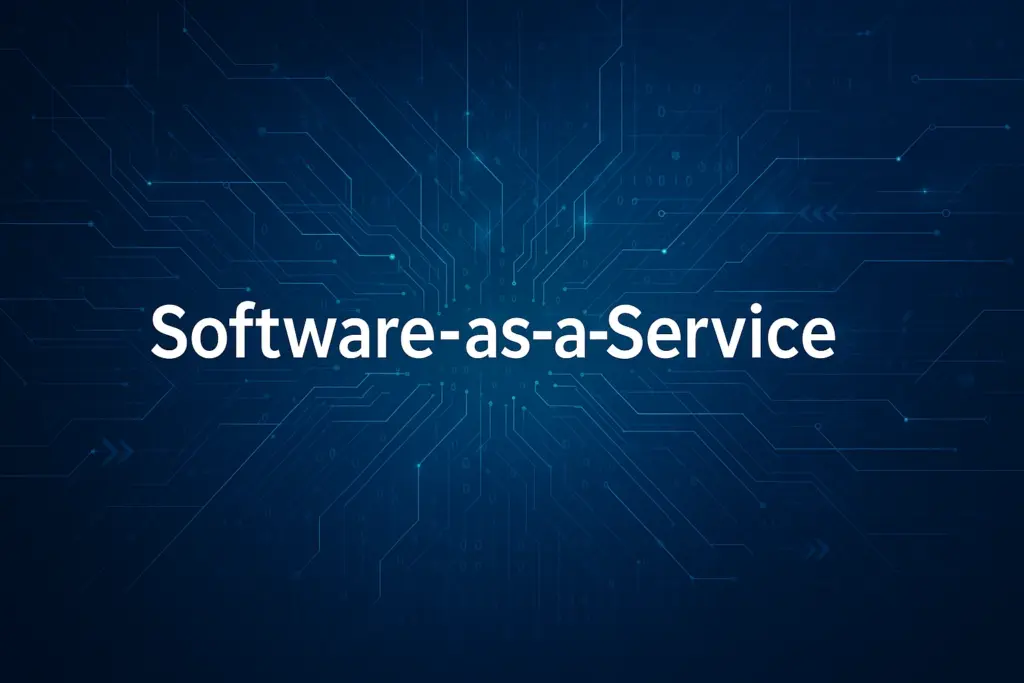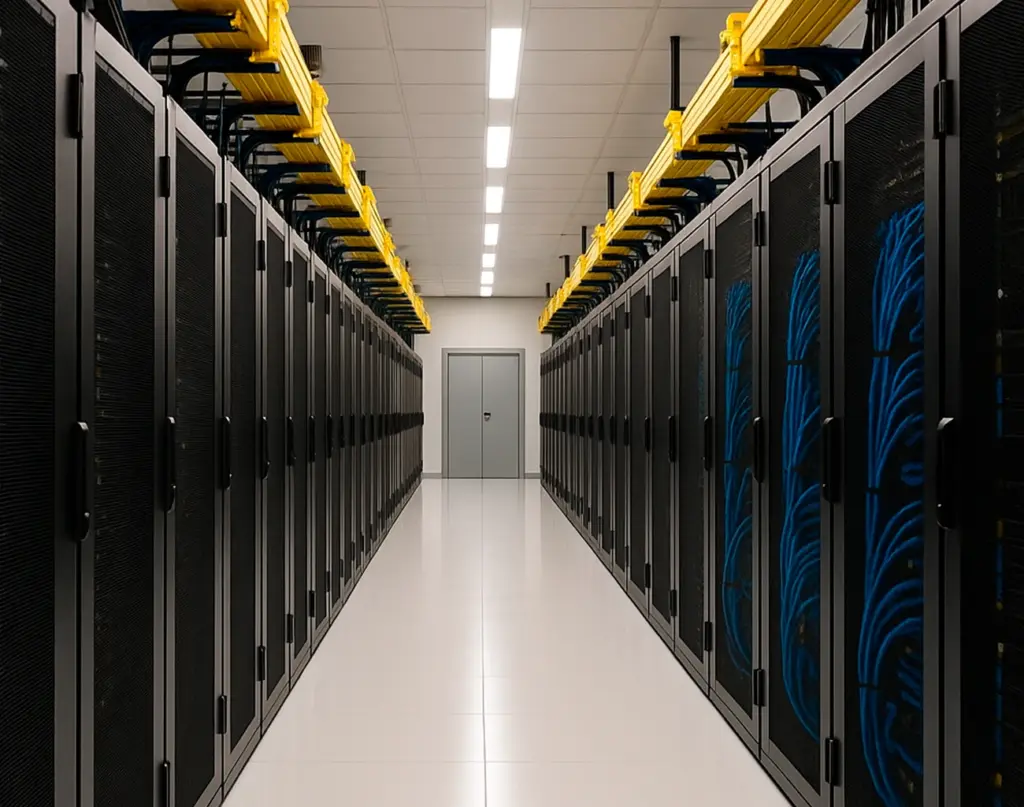
For SaaS companies, infrastructure is not just a technical foundation — it’s the core of the entire business model. It directly affects everything: service performance, user experience, scalability, and ultimately, revenue.
When a software as a service project first enters the market, hosting often takes a back seat.
The focus is on features, design, and sales. But once the user base grows into the thousands, one thing becomes clear — without a stable infrastructure, growth turns into a struggle against limitations.
Mistakes made early are costly. Underestimating network capacity, lacking compute resources, or relying on an unstable provider can cause downtime, lag, and customer churn.
And in the SaaS world, every second of delay and every hour of downtime equals lost subscriptions.
Choosing the right hosting partner is a strategic decision. It determines not only where your code runs, but also how securely and flexibly your business can scale. Unlike basic web projects, SaaS platforms demand high availability, scalability, and support for continuous workloads.
How Infrastructure Drives SaaS Growth
The infrastructure behind a SaaS platform is the ecosystem that supports every stage of the customer journey — from the first page load to CRM billing. The better your computing power, data storage, and network availability are organized, the faster your company grows.
1. Performance and User Experience
In SaaS, every millisecond counts. Slow dashboards, long report generation times, or login failures all signal unreliability to users. Even if your product features are flawless, performance bottlenecks make it feel unfinished. A reliable infrastructure ensures both speed and stability — especially under peak loads, when hundreds of users are active or when databases handle complex queries.
2. Scalability and Predictable Growth
Good infrastructure scales without disruption. When new customers or modules are added, servers and network resources must adapt automatically — not through manual intervention. If the platform isn’t ready to grow, even a successful marketing campaign can turn into an operational failure. Scalability isn’t just about adding servers — it’s about architecture: containerization, distributed systems, and high-availability clusters. These elements enable smooth expansion without downtime.
3. Reliability and Customer Retention
For SaaS, every hour of downtime is more than a technical issue — it’s a business risk. It means lost users, canceled subscriptions, and negative reviews. Studies show that over 60% of SaaS customers never return after a major outage.
That’s why your infrastructure must guarantee:
- Uptime of at least 99.9%
- Automated failover and data redundancy
- Real-time monitoring and alerting
Reliability isn’t about convenience — it’s about trust.
4. Security and Compliance
SaaS platforms handle sensitive data — so compliance and protection are non-negotiable.
Your hosting provider directly affects how encryption, access control, and DDoS mitigation are implemented. For businesses that build customer relationships on data integrity, security isn’t an option — it’s the foundation of credibility.
Key Components of a Scalable SaaS Infrastructure
For a SaaS platform to grow without technical limitations, its infrastructure must be flexible, resilient, and predictable under scale. No component works in isolation — the network, compute resources, storage, and security systems form a unified ecosystem that supports the entire lifecycle of the service.
1. Compute Resources (CPU, RAM, GPU)
The core workload of any SaaS platform lies on its compute nodes. The performance of CPUs and the amount of RAM determine data processing speed, interface responsiveness, and stability under peak loads. For analytics-heavy or AI-driven modules, GPU servers may be required — they accelerate data processing, machine learning, and real-time visualization. The key factor here is scalability: the ability to increase resources instantly without data migration or downtime.
2. Network and Data Transmission Channels
The network is the nervous system of SaaS infrastructure. A reliable hosting partner must provide not only high bandwidth (starting from 1 Gbit/s and above), but also low latency between nodes — especially when the system spans multiple regions. Using load balancers and CDNs helps distribute traffic efficiently and deliver content quickly to users across countries. For SaaS with an international audience, this is critical: connection speed directly affects customer retention.
3. Data Storage
Data is the core of every SaaS product. Modern setups combine NVMe SSDs for high-performance operations with object storage for scalable long-term data management. The storage layer must be distributed and capable of horizontal scaling without downtime.
Equally important are backup policies and geo-replication — ensuring data remains accessible even if one data center fails.
4. Redundancy and High Availability
A dependable SaaS service cannot rely on a single server. Redundancy must be built into the architecture through database clustering, service duplication, and automatic failover mechanisms. This approach ensures continuous operation even during hardware failures or network disruptions.
5. Security
A robust SaaS infrastructure must be protected at multiple layers:
- Data encryption in transit and at rest
- Access management (IAM, 2FA)
- Protection from DDoS and application-level attacks
- Activity logging and event auditing
Choosing a hosting partner certified under ISO 27001, SOC 2, or equivalent standards is a non-negotiable requirement for businesses serving corporate clients.
Why Choosing the Right Hosting Partner Is Critical for SaaS Companies

Hosting for SaaS is not a technical afterthought — it’s a strategic foundation that directly impacts service quality, scalability, and financial performance. The right hosting partner determines whether your platform can handle growth, maintain uptime, and keep customer data secure.
1. Hosting Defines Your SLA and Reputation
For SaaS businesses, an SLA below 99.9% translates into a real customer retention risk.
Even short outages can trigger waves of subscription cancellations and negative reviews. A reliable hosting partner guarantees high uptime, transparent monitoring, and clear incident response procedures — protecting both your operations and your reputation.
2. Scalability Speed = Business Growth Speed
A SaaS company can grow faster than anticipated — and infrastructure must scale just as fast. Your hosting provider should support horizontal and vertical scaling without downtime — adding nodes, RAM, CPU, or storage “on the fly.” Companies that choose static or rigid hosting solutions often find that their infrastructure becomes the bottleneck of business growth.
3. Geography and Network Capabilities
If your SaaS serves users across multiple regions, your hosting partner should have a global footprint or points of presence (PoPs) in the target markets. This reduces latency and improves user experience. Access to CDN networks, private interconnects, and peering with major carriers ensures stable performance under heavy load.
4. Transparency and Support
For mission-critical SaaS applications, “business hours” support isn’t enough. You need 24/7 assistance from real engineers, capable of diagnosing and resolving issues — not just logging tickets. A good hosting partner acts as an extension of your team, not just another service vendor.
5. Security and Trust
Your provider isn’t just responsible for servers — they’re responsible for your customers’ data security. If the infrastructure lacks international certifications (ISO 27001, SOC 2) or has unclear privacy policies, it introduces both legal and reputational risks. This is especially crucial for SaaS platforms operating in finance, healthcare, or education, where compliance and data protection are non-negotiable.
Common Mistakes When Choosing Infrastructure for a SaaS Company
Many SaaS businesses make the same mistakes when selecting their infrastructure.
At the early stages, these issues seem minor — but over time, they turn into serious bottlenecks that limit growth and scalability.
1. Focusing on Price Instead of SLA
The most common mistake is choosing a hosting provider based solely on cost. Saving a few hundred euros per month might look appealing, but cheap plans often come with hidden trade-offs — weak SLAs, unreliable support, and unstable networks. When your infrastructure crashes in the middle of a workday, price becomes irrelevant. The right approach is to measure the cost of downtime, not the cost of hosting. Losing one major client or a few hours of uptime is far more expensive than paying for a stable, high-quality service.
2. Underestimating Workload Requirements
Another typical error is underestimating resource needs. Early-stage startups often assume that 2–4 GB of RAM and a single CPU core will be “enough for now.” But as soon as the user base grows, the platform starts slowing down — or even crashing. The problem isn’t just limited capacity; it’s also architectural rigidity. Without scalable infrastructure, companies are forced to migrate to new servers later, creating risks and downtime.
3. No Backup or Disaster Recovery Strategy
Many SaaS companies skip backup strategies or perform them irregularly. A single update error or database failure can cause complete data loss. Without a Disaster Recovery Plan (DRP), even a minor incident can escalate into a full-scale catastrophe.
4. Ignoring User Geography
If your customers are spread across multiple regions, hosting all servers in one country is a major limitation. High latency directly affects page load times and service stability. Using CDN networks, edge servers, and multi-region data centers helps deliver content faster and improves user retention by reducing lag.
5. Lack of Infrastructure Visibility and Control
Some companies rely entirely on third-party cloud providers, losing visibility over where data is stored, who manages the network, and how security is enforced. As the customer base grows, this becomes a critical risk. A responsible hosting partner should provide full infrastructure transparency, access to logs and reports, and the ability to audit operations at any time.
How to Evaluate a Hosting Provider: A Checklist for SaaS Companies

Choosing an infrastructure partner for a SaaS platform is a decision that defines the company’s future. To avoid subjectivity, it’s best to approach this process systematically. Below is a practical checklist that helps evaluate any hosting provider in terms of reliability, flexibility, and business compatibility.
1. Technical Reliability
- Uptime of at least 99.9% — the minimum acceptable level for commercial SaaS.
- Multi-layer redundancy: power, network, and storage.
- Modern Tier III or higher data centers.
- Support for auto-scaling and high-availability configurations (clustering, replication, failover).
2. Performance and Flexibility
- Ability to scale resources dynamically without downtime.
- Use of NVMe SSDs and the latest CPU generations.
- Access to a global network with minimal latency between regions.
- Support for containerization (Docker, Kubernetes) — crucial for microservice-based SaaS.
3. Security
- ISO 27001, SOC 2, or equivalent certification.
- Encryption of data both at rest and in transit.
- Comprehensive access management system (IAM, 2FA, activity logging).
- DDoS and network-level attack protection.
4. SLA and Support
- A transparent Service Level Agreement with measurable KPIs — not just marketing claims.
- 24/7 support with live engineers, not ticket bots.
- Response time to incidents under 15 minutes.
- Option of a dedicated account manager for enterprise clients.
5. Geography and Scalability
- Points of Presence (PoPs) in key regions where your users are located.
- CDN and edge computing support for faster content delivery.
- Ability to deploy and manage infrastructure across multiple countries under a unified control panel.
6. Transparency and Management
- Access to a real-time monitoring dashboard (load, uptime, traffic, alerts).
- Public incident and maintenance reports.
- Clear data retention and deletion policies.
- Flexible legal agreements compliant with GDPR and other data regulations.
Why the Right Hosting Partner Defines SaaS Success
A hosting provider for SaaS is not just a vendor — it’s a strategic partner that directly affects your reliability, scalability, and reputation.Infrastructure determines how stable your product runs, how fast it grows, and how much your clients trust it.
While functionality can evolve over time, a weak technical foundation limits growth from day one. Choosing the right hosting partner means choosing predictability, security, and flexibility — the three pillars of sustainable SaaS development.
Companies that view hosting not as an expense but as part of their strategic advantage grow faster, reduce risks, and deliver a consistently reliable user experience.
